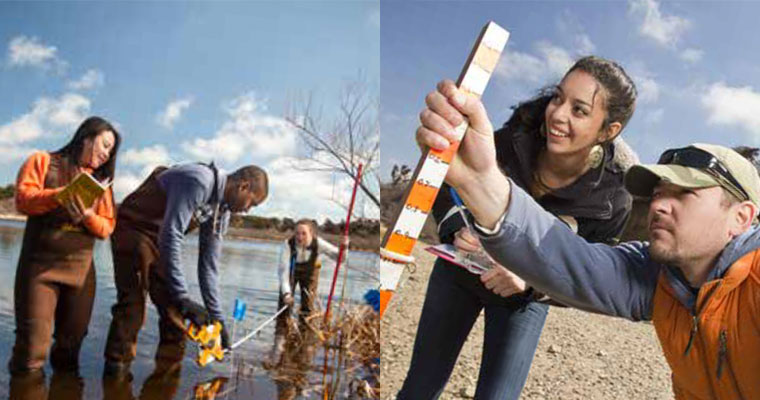- Home
- News
- Recent News
- Did you know? Five facts about: The Nantucket Fiel
Did you know? Five facts about: The Nantucket Field Station
Sixty years ago, the family of Stephen Peabody, through the Nina Hazen Foundation, gave their summer home and large acreage of coastal land to the University of Massachusetts to create a base for teaching and research on Nantucket. In 1964, the Katherine Coe Folger family contributed an additional parcel. Today, the combined 107 acres houses the Nantucket Field Station, a world-class research and education facility that serves scientists and students from around the globe. Station Director Yvonne Vaillancourt shared some facts with Beacons about UMass Boston’s “gateway to the environmental and cultural resources of the lovely island of Nantucket.”

Did you know? Five facts about:
The Nantucket Field Station
1-The station provides faculty and student researchers with a field science laboratory, classroom space, a dormitory, field equipment, and “a wonderful cross-section of representative habitats,” including marine, estuarine, meadow, forest, and freshwater areas, said Vaillancourt. Through the Nantucket station, the Stone Living Lab in Boston Harbor, UMass Amherst’s Gloucester Marine Station, and UMass Dartmouth’s marine science and technology campus in New Bedford, UMass system researchers “have access to basically every biome of the coastal ocean across Massachusetts,” according to Bob Chen, interim dean of the UMass Boston School for the Environment.
2-The School for the Environment oversees the Nantucket station, but it’s used for far more than environmental science research. Topics of studies conducted there span ocean microplastics, seal biology, avian influenza, tick-borne disease, harmful algal blooms, marine invasive species, and the impact of climate change, as well as African American archaeology, historical anthropology, and public history.
3-UMass Boston offers weekend seminars and two-week summer classes in history, biology, and environmental science at the station. These opportunities are especially valuable for students of an urban, largely non-residential university, said Vaillancourt.
“They give students powerful and transforming experiences, but also very strong connections to the other students they live and work with here,” she said. “And it’s a place to be enveloped by the outdoors, with remarkable quiet and space to unwind. For Boston students to be able to access that is a phenomenal resource.” Vaillancourt also shares online talks by station researchers on YouTube at umassnantucketfieldstation2024.
4-Scholarships are available for UMass Boston students who want to enroll in Nantucket-based courses or are interested in internships and research. To learn more about these opportunities or how to support them, visit umb.edu/nantucket.
5-More than 400 students, educators, and researchers visited the field station last academic year, from kindergarten classes to research teams. An estimated 10,000 visitors walk the grounds each year. The property’s many trails are open to the public and Beacons have a standing invitation. “We’re always happy to see alumni,” said Vaillancourt. “If you’ve been here before, come back and reminisce. And if you never knew about it, come see a special corner of your school.”
Do you have photos of or stories about the Nantucket Field Station? Share them with Yvonne at Yvonne.Vaillancourt@umb.edu or on Facebook (NantucketFieldStation)!
